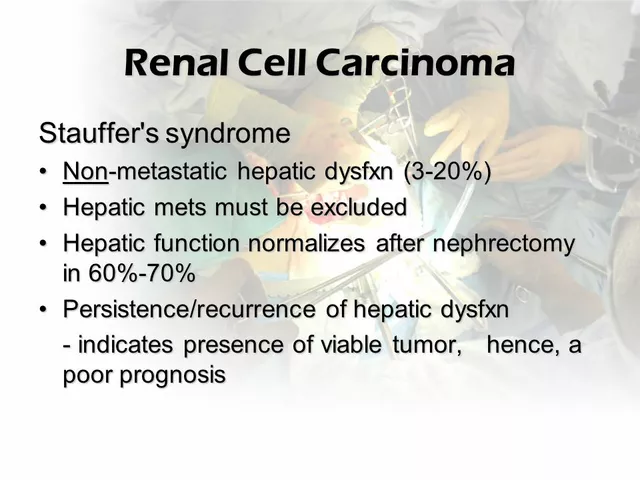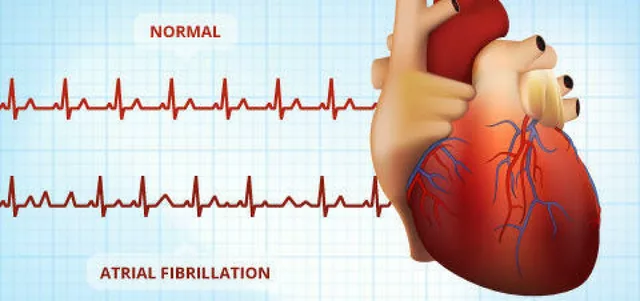Looking for the right painkiller can feel like a maze of brand names and confusing labels. You might wonder whether Motrin is truly the best choice or if there’s a safer, cheaper, or faster option waiting on the shelf. This guide breaks down Motrin (ibuprofen) side‑by‑side with the most common alternatives, so you can match the drug to your symptoms, health needs, and budget.
What is Motrin (Ibuprofen)?
When you pick up a bottle of Motrin is the well‑known brand name for ibuprofen, a non‑steroidal anti‑inflammatory drug (NSAID) that reduces pain, fever, and inflammation. It was first approved by the FDA in 1974 and has become a household staple for headaches, muscle aches, menstrual cramps, and dental pain. The typical adult dose is 200‑400mg every 4‑6hours, not exceeding 1,200mg per day without a doctor’s supervision.
How Ibuprofen Works
Ibuprofen blocks the cyclooxygenase (COX) enzymes-COX‑1 and COX‑2-preventing the formation of prostaglandins, the chemicals that cause pain and swelling. By lowering prostaglandin levels, ibuprofen eases both the sensation of pain and the underlying inflammation. This dual action makes it useful for conditions where both factors play a role, such as sprains or arthritis.
Popular Alternatives to Motrin
Below are the most common over‑the‑counter (OTC) and prescription options you’ll see on pharmacy shelves. Each entry includes a brief definition marked up with microdata for easy knowledge‑graph extraction.
- Advil is another brand of ibuprofen, typically priced lower than Motrin but chemically identical. It shares the same dosage guidelines and side‑effect profile.
- Aleve contains naproxen, a longer‑acting NSAID that provides relief for up to 12hours, making it a favorite for chronic pain.
- Tylenol is the brand name for acetaminophen, which relieves pain and reduces fever but does not reduce inflammation. It’s gentler on the stomach.
- Aspirin (acetylsalicylic acid) works as a pain reliever and blood‑thinner, useful for heart‑attack prevention but can irritate the stomach lining.
- Celecoxib is a prescription‑only COX‑2 selective NSAID that offers anti‑inflammatory benefits with a lower risk of stomach ulcers, but it may increase cardiovascular risk.
- Ketoprofen is a lesser‑known NSAID used in Europe and Canada; it has a rapid onset for acute pain but can cause similar GI side effects as ibuprofen.
- Topical NSAIDs such as diclofenac gel are applied directly to skin, delivering anti‑inflammatory action locally while minimizing systemic exposure.

Key Comparison Criteria
To decide which product fits you best, look at these seven factors. We’ll plug the data into a quick‑reference table right after.
- Onset of relief - how fast the drug starts working.
- Duration of effect - how long pain stays at bay.
- Anti‑inflammatory strength - does it actually reduce swelling?
- Gastro‑intestinal (GI) safety - risk of stomach irritation or ulcers.
- Cardiovascular risk - impact on heart health.
- Maximum daily dose - ceiling for safe usage.
- Typical price (US, OTC) - what you’ll pay per 30‑tablet pack.
Side‑by‑Side Comparison Table
| Drug | Onset | Duration | Anti‑Inflammatory | GI Risk | Cardio Risk | Max Daily Dose | Typical OTC Price* |
|---|---|---|---|---|---|---|---|
| Motrin (Ibuprofen) | 30‑60 min | 4‑6 hrs | Moderate | Medium | Low‑moderate | 1,200mg | $6‑$9 |
| Advil (Ibuprofen) | 30‑60 min | 4‑6 hrs | Moderate | Medium | Low‑moderate | 1,200mg | $5‑$8 |
| Aleve (Naproxen) | 45‑90 min | 8‑12 hrs | Strong | Higher | Moderate | 660mg | $7‑$10 |
| Tylenol (Acetaminophen) | 15‑30 min | 4‑6 hrs | None | Low | Low | 3,000mg | $4‑$7 |
| Aspirin | 30‑60 min | 4‑6 hrs | Weak‑moderate | High | Low‑moderate | 4,000mg | $3‑$5 |
| Celecoxib (Prescription) | 1‑2 hrs | 12‑24 hrs | Strong | Low | Higher | 400mg | Prescription only |
| Ketoprofen | 30‑45 min | 4‑6 hrs | Strong | Medium | Low‑moderate | 300mg | Not widely sold OTC in US |
| Topical NSAIDs (e.g., Diclofenac gel) | 1‑2 hrs (local) | 6‑8 hrs (local) | Moderate (local) | Very low (systemic) | Very low | N/A | $12‑$15 |
*Prices reflect typical U.S. OTC retail rates in 2025 and can vary by pharmacy.
Choosing the Right Option for Your Situation
Here’s a quick cheat‑sheet to match common complaints with the best pain reliever.
- Sudden headache or fever: Tylenol works fast, is gentle on the stomach, and is safe for most adults.
- Muscle sprain or joint inflammation: Motrin or Advil gives solid anti‑inflammatory power without the long half‑life of naproxen.
- Back pain that lasts all day: Aleve’s 12‑hour coverage means you may only need a single dose.
- People with ulcer history: Opt for topical NSAIDs or acetaminophen to avoid GI irritation.
- Cardiovascular disease: Talk to a doctor before using ibuprofen, naproxen, or celecoxib; acetaminophen is usually safer.
- Need for blood‑thinning: Low‑dose aspirin can serve both purposes, but only under medical guidance.
Safety Tips and Drug Interactions
Even OTC medicines can cause trouble if you ignore a few safety rules.
- Never exceed the maximum daily dose listed in the table. Overdose can damage kidneys and liver.
- Avoid mixing multiple NSAIDs (e.g., ibuprofen + naproxen). The combined GI risk spikes.
- If you take blood thinners like warfarin, talk to a pharmacist before using ibuprofen or aspirin.
- People with chronic kidney disease should limit ibuprofen to short‑term use only.
- Pregnant women in the third trimester should steer clear of NSAIDs; acetaminophen is the safer choice.
Bottom Line
Motrin (ibuprofen) is a solid all‑rounder for pain that also carries inflammation. When you need a longer‑lasting effect, aleve (naproxen) steps in. If your stomach is sensitive, acetaminophen or topical gels keep you comfortable without the GI hit. And for those with heart or kidney concerns, a quick chat with a clinician can point you to the safest alternative.
Frequently Asked Questions
Can I take Motrin and Tylenol together?
Yes, ibuprofen and acetaminophen work via different pathways, so combining them can provide stronger pain relief. Just keep each below its maximum daily dose and avoid doing it for more than a few days without medical guidance.
Why does ibuprofen cause stomach upset?
Ibuprofen blocks COX‑1, an enzyme that protects the stomach lining. When COX‑1 is inhibited, the stomach loses some of its natural mucus barrier, making it more prone to irritation and ulcers.
Is Aleve better for arthritis than Motrin?
For chronic arthritis, naproxen (Aleve) can be advantageous because its longer half‑life means fewer doses and steadier inflammation control. However, it also carries a higher GI risk, so many doctors start patients on ibuprofen and add a protective agent if needed.
Can I use topical NSAIDs instead of oral ibuprofen?
Topical NSAIDs are great for localized joint or muscle pain and expose your gut to far less drug. They won’t work for fever or widespread pain, but for a sore knee they’re often enough.
What should I do if I accidentally exceed the ibuprofen limit?
If you notice symptoms like stomach pain, dark urine, or reduced urine output, seek medical attention right away. Otherwise, stop taking more and drink plenty of water; monitor for any unusual signs over the next 24‑48hours.









October 17, 2025 AT 13:20
Karen McCormack
In the grand tapestry of everyday aches, ibuprofen often masquerades as the quiet hero, slipping into our medicine cabinets without fanfare. Yet beneath its unassuming amber hue lies a cascade of biochemical choreography that tempers fire and dulls the edge of pain. When the cyclooxygenase enzymes surrender to its gentle grip, prostaglandins falter, and the rivers of inflammation recede. This mechanistic ballet grants us a window of relief that stretches, in most cases, four to six hours-enough time to finish a meeting, a workout, or a cherished afternoon tea. Compared to its cousin naproxen, whose half‑life lingers like a slow‑moving cloud, ibuprofen prefers the sprint over the marathon, delivering prompt onset without lingering shadows. The price tag, modest by modern standards, whispers a promise of accessibility that few prescription‑only allies can match. Yet the very same pathway that tames pain also courts the delicate lining of the stomach, a compromise that has haunted clinicians for decades. For those with a history of ulcers, the equation tilts, urging a pivot toward acetaminophen or a topical gel that sidesteps the gastrointestinal battlefield. Cardiovascular connoisseurs must also weigh the subtle elevation in blood pressure that ibuprofen can coax, especially when paired with salt or other hypertensive triggers. Renal guardians will note that prolonged, high‑dose usage can tax the kidneys, a reminder that even the most benign OTC potion carries responsibility. In practice, the art of choosing a pain reliever becomes a dance of trade‑offs: speed versus duration, inflammation versus gastric safety, cost versus convenience. The table you perused paints these dichotomies in stark hues, but the lived experience often blurs the lines with personal tolerance and comorbidities. When you layer ibuprofen with acetaminophen, the synergy can amplify relief without doubling the risk, provided doses remain within their respective ceilings. Conversely, stacking multiple NSAIDs is a culinary disaster, amplifying the very risks you aim to dodge. Ultimately, the decision rests on a simple mantra: know your body, respect the limits, and consult a professional when the shadows of chronic pain loom large. May your choices be informed, your pockets light, and your days less punctuated by throbbing reminders.
October 18, 2025 AT 17:06
Earl Hutchins
Ibuprofen hits the pain fast and tackles inflammation right away so you can get back to daily tasks without a hefty price tag or a prescription.
October 19, 2025 AT 20:53
Tony Bayard
Picture a battlefield inside your joints where rogue prostaglandins wage war, and ibuprofen swoops in like a seasoned general, calling a truce that lasts just long enough to let you finish that marathon of chores. The drug’s swift onset feels like a siren’s call, cutting through the fog of ache with surgical precision. While it may not stay forever, its temporary peace buys you precious minutes to breathe, move, and maybe even smile again. Remember, though, every hero has a weakness; the stomach lining can protest if you overstay your welcome, so respect the dosing schedule.
October 21, 2025 AT 00:40
Jay Crowley
Use the lowest effective dose and avoid stacking NSAIDs.
October 22, 2025 AT 04:26
sharon rider
The choice of a painkiller mirrors a larger life decision: weigh immediate comfort against long‑term wellbeing, and let personal health history guide the selection rather than marketing hype.
October 23, 2025 AT 08:13
joba alex
Honestly, the whole ibuprofen hype is a bit overrated – sure, it blocks COX enzymes but the GI trade‑off is massive, especially if you’re on a keto diet or using statins. You’re basically juggling a cocktail of side‑effects that pharma loves to downplay. If you want real relief, consider low‑dose aspirin with a PPI, or better yet, a topical diclofenac patch – less systemic exposure, more localized action. It definatly beats swallowing pills every few hours. Don’t just follow the OTC crowd; dig deeper into the pharmacokinetic matrix.
October 24, 2025 AT 12:00
Caleb Ferguson
Thanks for the balanced rundown; I’d add that for athletes the timing of ibuprofen relative to workouts can matter – taking it pre‑exercise may blunt muscle adaptation, so post‑session dosing is usually wiser.
October 25, 2025 AT 15:46
Faith Leach
What they don’t tell you is that the pricing wars on ibuprofen are a front for big pharma to funnel profits into newer, patented drugs that promise miracle cures but carry hidden risks. The subtle push toward brand names like Motrin keeps the market churn alive while generic options get sidelined in the public eye. Keep an eye on the supply chain narratives; they’re often scripted to tilt consumer trust toward the latest “innovation” rather than the tried‑and‑true.
October 26, 2025 AT 18:33
Eric Appiah Tano
Great points, and it’s key to remember that personal experimentation under medical guidance is the safest path. If you decide to combine ibuprofen with acetaminophen, start low, monitor how your stomach feels, and consider a protective probiotic or an occasional antacid. Stay informed, listen to your body, and don’t hesitate to chat with a pharmacist for tailored advice.
October 27, 2025 AT 22:20
Mark Conner
Take a nap, not a pill.